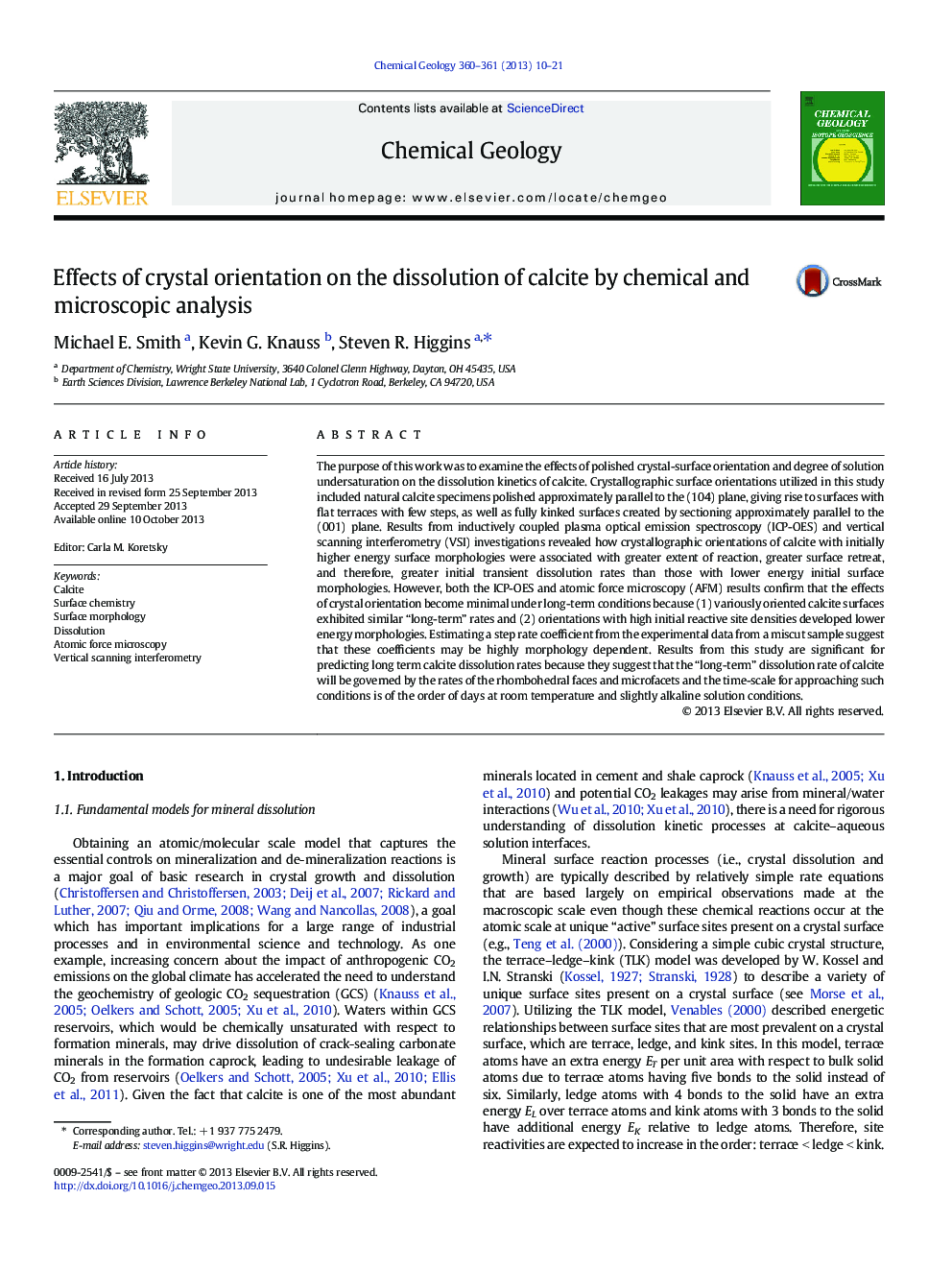| Article ID | Journal | Published Year | Pages | File Type |
|---|---|---|---|---|
| 4698855 | Chemical Geology | 2013 | 12 Pages |
Abstract
The purpose of this work was to examine the effects of polished crystal-surface orientation and degree of solution undersaturation on the dissolution kinetics of calcite. Crystallographic surface orientations utilized in this study included natural calcite specimens polished approximately parallel to the (104) plane, giving rise to surfaces with flat terraces with few steps, as well as fully kinked surfaces created by sectioning approximately parallel to the (001) plane. Results from inductively coupled plasma optical emission spectroscopy (ICP-OES) and vertical scanning interferometry (VSI) investigations revealed how crystallographic orientations of calcite with initially higher energy surface morphologies were associated with greater extent of reaction, greater surface retreat, and therefore, greater initial transient dissolution rates than those with lower energy initial surface morphologies. However, both the ICP-OES and atomic force microscopy (AFM) results confirm that the effects of crystal orientation become minimal under long-term conditions because (1) variously oriented calcite surfaces exhibited similar “long-term” rates and (2) orientations with high initial reactive site densities developed lower energy morphologies. Estimating a step rate coefficient from the experimental data from a miscut sample suggest that these coefficients may be highly morphology dependent. Results from this study are significant for predicting long term calcite dissolution rates because they suggest that the “long-term” dissolution rate of calcite will be governed by the rates of the rhombohedral faces and microfacets and the time-scale for approaching such conditions is of the order of days at room temperature and slightly alkaline solution conditions.
Keywords
Related Topics
Physical Sciences and Engineering
Earth and Planetary Sciences
Geochemistry and Petrology
Authors
Michael E. Smith, Kevin G. Knauss, Steven R. Higgins,
